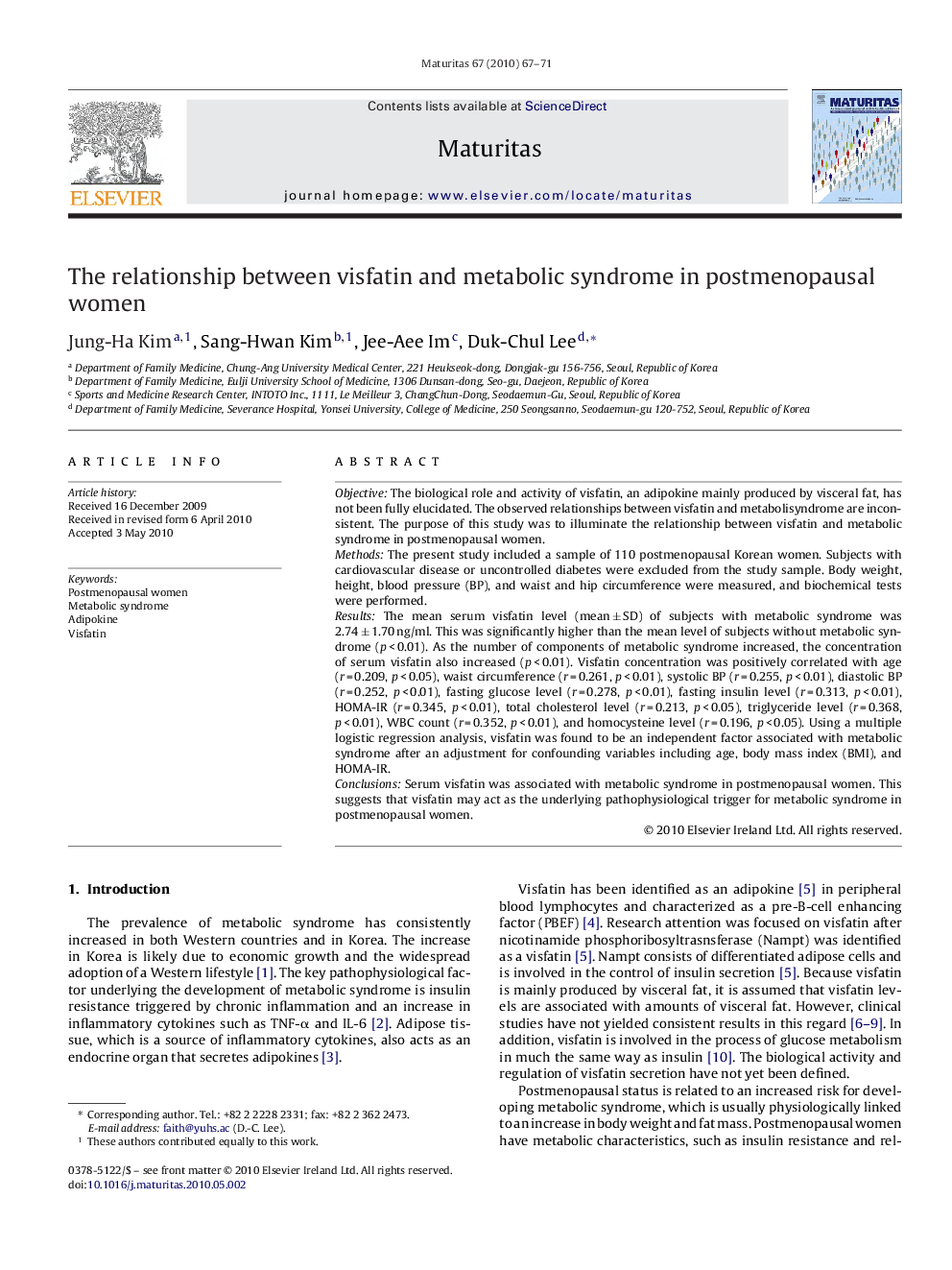| کد مقاله | کد نشریه | سال انتشار | مقاله انگلیسی | نسخه تمام متن |
|---|---|---|---|---|
| 1917826 | 1047925 | 2010 | 5 صفحه PDF | دانلود رایگان |

ObjectiveThe biological role and activity of visfatin, an adipokine mainly produced by visceral fat, has not been fully elucidated. The observed relationships between visfatin and metabolisyndrome are inconsistent. The purpose of this study was to illuminate the relationship between visfatin and metabolic syndrome in postmenopausal women.MethodsThe present study included a sample of 110 postmenopausal Korean women. Subjects with cardiovascular disease or uncontrolled diabetes were excluded from the study sample. Body weight, height, blood pressure (BP), and waist and hip circumference were measured, and biochemical tests were performed.ResultsThe mean serum visfatin level (mean ± SD) of subjects with metabolic syndrome was 2.74 ± 1.70 ng/ml. This was significantly higher than the mean level of subjects without metabolic syndrome (p < 0.01). As the number of components of metabolic syndrome increased, the concentration of serum visfatin also increased (p < 0.01). Visfatin concentration was positively correlated with age (r = 0.209, p < 0.05), waist circumference (r = 0.261, p < 0.01), systolic BP (r = 0.255, p < 0.01), diastolic BP (r = 0.252, p < 0.01), fasting glucose level (r = 0.278, p < 0.01), fasting insulin level (r = 0.313, p < 0.01), HOMA-IR (r = 0.345, p < 0.01), total cholesterol level (r = 0.213, p < 0.05), triglyceride level (r = 0.368, p < 0.01), WBC count (r = 0.352, p < 0.01), and homocysteine level (r = 0.196, p < 0.05). Using a multiple logistic regression analysis, visfatin was found to be an independent factor associated with metabolic syndrome after an adjustment for confounding variables including age, body mass index (BMI), and HOMA-IR.ConclusionsSerum visfatin was associated with metabolic syndrome in postmenopausal women. This suggests that visfatin may act as the underlying pathophysiological trigger for metabolic syndrome in postmenopausal women.
Journal: Maturitas - Volume 67, Issue 1, September 2010, Pages 67–71